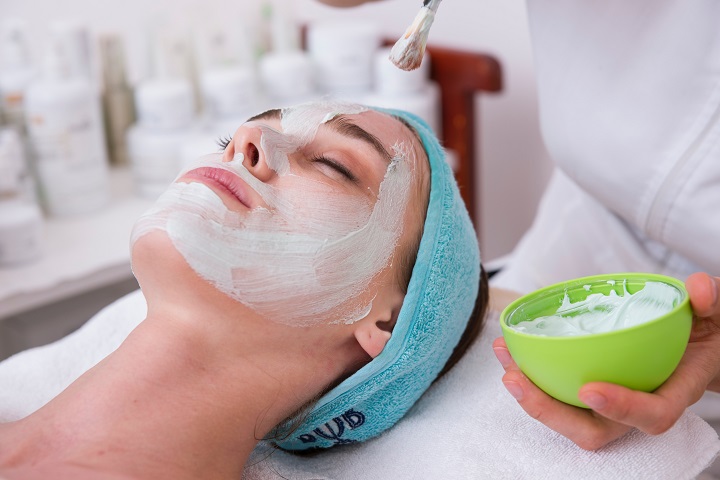Health & Fitness
Skin Care Cosmetics Manufacturing: a Detailed Guide
Skincare and cosmetic manufacturing is a rather intricate and dynamic process. Understanding the concept of marketing in skin care cosmetics manufacturing

The trend for clear and smooth skin without imperfections is one of the most enduring in recent years. The appearance of the skin can indicate whether a person eats well, sleeps enough, and leads a certain lifestyle. People are making every effort to improve the condition of their skin by selecting various skin care products: creams, lotions, tonics, serums, and masks. The skin care industry, being one of the most dynamically developing sectors, reflects this growing need of modern society. As demand increases, so does the supply, resulting in the expansion of the scale of skin care cosmetics manufacturing.
Good skin condition means not only an attractive external appearance but also inner confidence. This is precisely why so much effort is invested in achieving clean and healthy skin. In the following, we will explore the stages of creating skin care cosmetics, key concepts, and high-tech approaches to formulating products that can satisfy even the most discerning consumers.
Table of Contents
1. Understanding the Concept of Marketing in Skin Care Cosmetics Manufacturing
To begin with, it is important to understand where the trend for clean and healthy skin originates. Even in Ancient Egypt, Greece, and Rome, the concept of skin cleanliness was associated with hygiene standards and physical well-being. Bathing, massages, and the use of aromatic oils became part of a body care ritual, reflecting a conscious approach to one’s body and the shared values of ancient society. Today, well-maintained and smooth skin is not only an aesthetic ideal but also an expression of self-care.
The phrase “skin care” has evolved into a comprehensive philosophy: manufacturers aim to provide customers with not just cosmetic products but to create a genuine self-care ritual. A crucial aspect of this process is understanding the needs of each individual skin type, forming the foundation for most marketing strategies. To delve deeper into their functionality and effects, let us analyze some of the most prevalent approaches for promoting skin care cosmetics.
Product differentiation entails a set of actions and techniques aimed at highlighting specific product characteristics. From selecting ingredients based on skin type and condition to a comprehensive formula specially developed to address a particular issue – each product offers a unique action. It is worth noting that differentiation encompasses not only internal components but also visuals that capture the consumer’s attention during the initial stages of product acquaintance.
Targeted marketing. Strategic analysis and market research enable the identification of consumer groups with similar needs and expectations. By creating products tailored precisely to these consumer categories, manufacturers emphasize their uniqueness and ability to provide solutions that closely match the needs of specific user groups. Targeted marketing specializes in implementing such tactics in product promotion.
The trend towards environmental responsibility is becoming increasingly relevant, as consumers become more conscientious, selecting products that benefit not only their skin but also the environment. A part of the marketing strategy may focus on using natural and organic ingredients, as well as packaging products with biodegradable and recyclable materials. Educational and informational materials can also emphasize the brand’s expertise and its commitment to addressing important societal issues.
These enumerated techniques are currently at the forefront of use in the skin care cosmetics manufacturing industry. They are aimed at showcasing their values to consumers, as well as fostering closeness and establishing ongoing engagement.

2. Formulation Development Process in Skin Care Cosmetics Manufacturing
Behind every cosmetic product that you see on the shelves of a shop or pharmacy, there lies a complex set of actions, research, and experiments. Crafting a new product from scratch can take years and involve formulation development, ingredient selection and blending, adjustment of product texture and consistency, quality evaluation testing, and finally, packaging of the finished product.
Each of these stages is exceptionally vital for the ultimate outcome. However, for a clearer understanding of the skin care product creation process, we will divide all procedures into three primary phases.
Selection of composition components. Understanding the role of each ingredient in the formulation is a key aspect of producing a high-quality product. Every element carries responsibility for specific functions: moisturizing, nourishing, cleansing, and protecting from environmental irritants. For instance, hyaluronic acid hydrates the skin, collagen enhances elasticity, and vitamins C and E create a barrier between our skin and free radicals. Depending on the product’s intended purpose, it is crucial to choose suitable components with properties that can bring maximum benefit and aid in addressing existing issues.
Technological production processes. At this stage of product creation, every aspect is important: ingredient proportions, mixing temperatures, and process durations – all of these determine the final consistency, structure, and even aroma of the product. Modern technologies and equipment allow for the automation of most procedures, but it is essential to closely monitor the condition and functionality of all devices.
Effectiveness and safety testing. Safety is an integral aspect. During product development, the likelihood of allergic reactions is considered, and high-quality certification standards are adhered to. The product’s toxicological nature, chemical structure, and level of component impact are all subject to assessment. Only after passing all stages of testing can the product be deemed safe and proceed to the next production phase.
In the end, after the three-stage formulation development, the product already possesses its distinct features and unique effects. The subsequent stages on the path to the finished product will be discussed further.
3. Packaging and Design
The external appearance of the product is significant. Certainly, this in no way affects the overall properties of the product, however, for attracting the customer, this factor is one of the most important. It is not merely a shell but the initial impression that permeates the perception of the potential buyer. In this delicate interplay of forms and colors, every nuance matters, for the first impression is not entitled to an error.
So, what is crucial for manufacturers to consider in order to present a worthy product to the audience? It is worth focusing one’s attention on several points.
Labeling entails not only the application of dry numbers and designations to the packaging, but also the creation of an informational canvas that provides complete information about the product’s properties, composition, and application method. At this stage, it is important to be concise and precise so that the consumer can grasp at first glance what product is before them and what functions it possesses. Intuitively clear labeling is always more user-friendly for the buyer.
Packaging materials, in turn, are tools for keeping the product intact and airtight. When choosing packaging materials, it is advisable to give preference to durable and environmentally-friendly options, in order to set the product apart from others and thus demonstrate the brand’s values and philosophy.
Design encompasses the visual aspects of the packaging, which shape the brand identity and influence the emotional perception of the product. The product’s external appearance should harmonize with the specificity and functionality of the product, in order to create associations with specific characteristics and promote recognition among users.
Overall, the packaging of skin care cosmetic products possesses practical and strategic significance, uniting informational, functional, and aesthetic aspects for effective communication with the consumer and product differentiation in the market.

4. Private Label vs. Branded Products: What Is the Difference?
In the realm of commerce, the concepts of private label and branded products are often conflated, yet in practice, these alternatives entail two distinctly separate approaches to production, marketing, and consumer engagement. We shall delve further to discern the advantages and risks entwined with each of them.
a. Private Label
A private label, also known as a retail network brand, represents products created and labeled by a specific retail seller. Often, the brand is associated with a particular chain of shops and may only be sold there. This approach enables shops to control the production, quality, and packaging of private-label products.
Advantages:
- Financial competitiveness. Private label manufacturing is usually cheaper, which can attract consumers seeking a brand with flexible pricing.
- Customer loyalty. Consumers satisfied with private brand products may become regular customers of a specific retail network.
- Control over production and product quality. Retail networks take a responsible approach to control all stages of production, ensuring high product quality in the end result.
Disadvantages:
- Limited availability. Products are only available in specific shop networks, potentially restricting consumers’ purchasing options.
- Less recognizable brand. Unlike well-established brands, private brands may lack the same reputation and recognition among consumers.
b. Branded Products
On the other hand, branded products constitute goods that are created and promoted by individual brands independently of retail networks. Brands invest in the development of a unique identity and strive to enhance recognition and establish a good reputation.
Advantages:
- Recognition and prestige. Brands can cultivate their own community of consumers who value the identity and quality of the products.
- Wide availability. Products from brands are typically available in various stores and online resources, providing consumers with more options for purchasing goods.
Disadvantages:
- Pricing policy. Banded products are often more expensive due to the cost of branding and marketing.
- Less controlled production. There are often cases where brands overly rely on their manufacturers and suppliers, which can ultimately lead to less stringent control over production and the occurrence of errors.
So, which option is better to choose for skin care cosmetics manufacturing? It depends on the company’s strategic goals and market demands. By analyzing the pros and cons of each type, one can determine how successfully the business can adapt to one form of operation or another.
5. Popular Skin Care Products on the Market
The market of cosmetic products for skin care is currently saturated with various remedies, unique both in composition and function. Among the general array, several types of cosmetic products have gained the greatest popularity among consumers.
Facial serums are drops of intensive care, concentrated essences containing active ingredients such as hyaluronic acid, peptides, and antioxidants. All of them are aimed at moisturizing, smoothing wrinkles, and revitalizing the skin. Among frequently used active components are hyaluronic acid, vitamin C, and retinol.
Facial masks are another common type of product that possesses various properties, from moisturization to skin cleansing. Their simple application method and quick effect make them indispensable in a skincare routine. Masks often contain vitamin E, clay, plant extracts, natural oils, and lactic acid.
Creams for skin care, including day and night creams, are a fundamental element in daily skin care. They can have different properties, but most commonly, they provide protection and moisturization to the skin. Peptides — protein fragments that help stimulate collagen production and improve skin elasticity — aid in realizing this. Niacinamide and ceramides are also frequently used.
Conclusion
Skin care cosmetics manufacturing is a rather intricate and dynamic process. Analyzed aspects, such as ingredient selection, formula development, testing, and product safety, are incredibly crucial for ensuring the quality and effectiveness of the final products. Innovations in production enable the attainment of an optimal blend of ingredients to achieve specific outcomes, such as moisturization, rejuvenation, cleansing, and others. Marketing strategies, in turn, focus attention on the functional properties of the products and their advantages for the skin.
-

 Instagram4 years ago
Instagram4 years agoBuy IG likes and buy organic Instagram followers: where to buy them and how?
-

 Instagram4 years ago
Instagram4 years ago100% Genuine Instagram Followers & Likes with Guaranteed Tool
-

 Business5 years ago
Business5 years ago7 Must Have Digital Marketing Tools For Your Small Businesses
-

 Instagram4 years ago
Instagram4 years agoInstagram Followers And Likes – Online Social Media Platform















